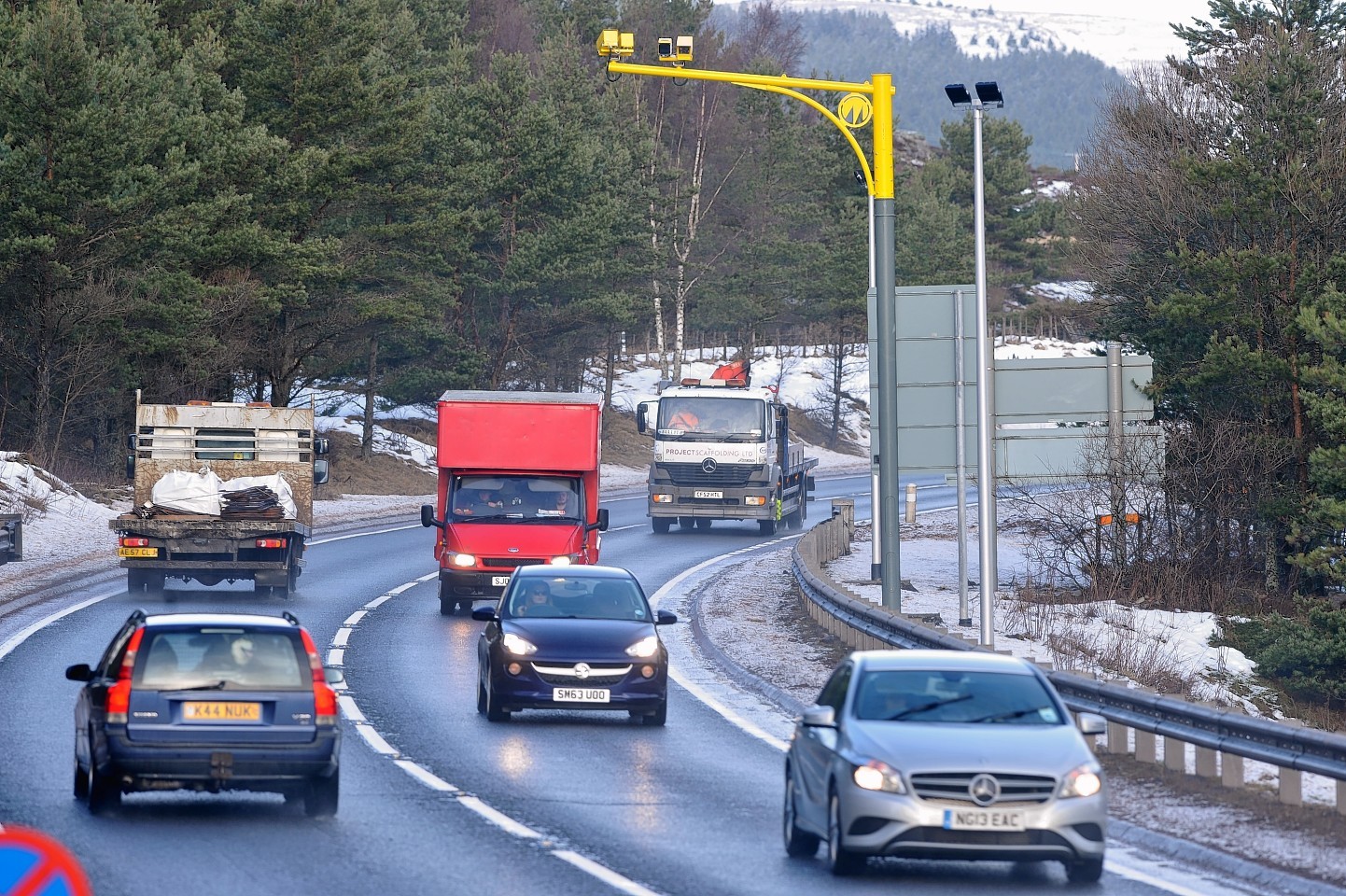Campaigners fear regular A9 users could lose their licences in a matter of weeks after it emerged drivers have already been snared twice by the controversial average-speed cameras.
New figures have revealed that 10 people are facing court accused of breaking the limit and scores more have been fined.
And at least three motorists were given six penalty points within three months of the so-called “yellow vultures” going live.
Critics of the £2.5million average-speed cameras system believe many more motorists will find themselves in the same predicament.
Last night, Inverness councillor Jim Crawford said he did not condone people breaking the speed limit.
But he warned: “People will lose their licences and, ultimately, their livelihood if they are using the A9 regularly.
“The reason the cameras were brought in is because the SNP government has refused, over the last eight years, to dual the A9.
“It badly needs dualling and this is a soft compromise costing a fraction of the price but at the expense of drivers.”
The Inverness South independent councillor added: “A friend of mine who depends on a van for his work didn’t realise he was ‘had’ twice in three days for doing 60mph and 61mph. He didn’t realise the limit was 50mph.
“The fact that he was sticking to 60mph and 61mph surely demonstrates that he was consciously trying stick to a speed limit, while travelling on the A9 heading for Tomatin.”
Mike Burns, who heads the A9 Average Speed Cameras are not the Answer campaign said: “This was raised as a concern from the outset, that there would be a negative impact on the economy because locals would be unfairly penalised compared to people who don’t use the road as often.
“We were told it wouldn’t be a problem. It is a problem. The lack of information, which was evidenced by them removing over 60 speed limit signs on the A9 prior to camera launch, has raised concern.
“Van drivers are raising concerns that they’ve been unfairly penalised. Their journey times have increased seven-fold.”
But Inverness, Nairn, Badenoch and Strathspey MP Drew Hendry dismissed the criticism as “nonsensical”.
He said: “The SNP government is the first to commit to dualling the whole of the A9. Work has started and we’ve recently seen some dualling taking place just north of Dalwhinnie.
“It’s ridiculous to say there’s no action. It’s being rolled out as quickly as it can be with planning and road engineering works.”
Figures obtained under freedom of information legislation covering the period between October 2014 and January 2015 show that 192 drivers have so far been given fixed penalties for breaching the speed limit between Inverness and Dunblane.
Of those, 147 have paid fines and 31 others have been reported to the fiscal because of non-payment. The remaining cases are currently being processed.
However, a further 10 drivers have been reported to the fiscal without the offer of a fixed penalty because their speed was far in excess of the limit.
No one was caught more than once during the same day.
In its reply to the freedom of information request, the police force said: “Our primary aim is to improve safety along the A9 route. Catching increased numbers of speeding motorists is not the aim.
“Speed is a key contributory factor to the seriousness of road accidents and the level of injury sustained.”
The cameras were switched on in October last year as part of efforts to cut the accident rate on the A9.
They operate on single carriageway sections of the road.
A total of 298 drivers breached the average-speed threshold between October and January.
During the following three months, the number reached 1,466.
A spokesman for the A9 Safety Group said: “The latest data available shows that there has been a significant shift in driver behaviour with the number of vehicles travelling at excess speed down from one in 10 before installation to around one in 250 since the cameras were introduced.”
“That’s an average of less than 10 per day across the whole of the enforcement area, based on an average of 10,000 vehicles a day north of Perth and 24,000 vehicles daily south of Perth.
